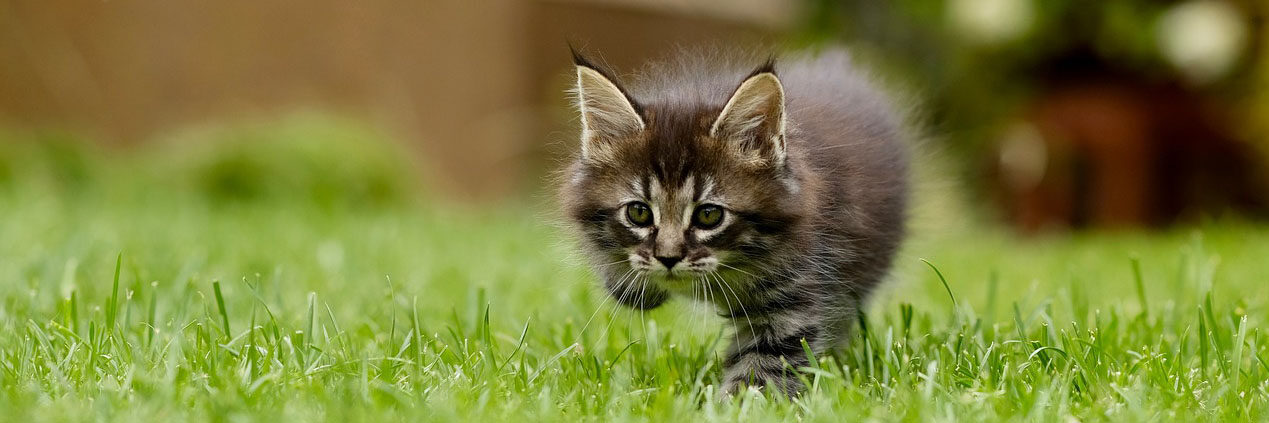CAT HEALTH AND WELLBEING
Having your cat spayed (female) or neutered (male) is the single more important thing you can do for both their welfare, and the general cat population as a whole. The operation is carried out in a single trip to the vet, and your cat is home with you the same day.
Neutering Male Cats
This is a very simple procedure, carried out by a vet under general anaesthetic, which removes the testicles, and prevents the cat from being able to father kittens. This is particularly important if your cat has outside access. Additionally, neutered males tend to be friendlier and more affectionate, wander less (and therefore become less likely to be run over on the road), and are much less prone to various medical conditions and diseases (including various cancers). Male kittens can be neutered from around about 2 months of age.
Spaying Female Cats
Whilst more complex than neutering a male cat, this is still a simple, standard procedure, carried out by a vet under general anaesthetic. The whole womb is removed, so there is a larger scar, and longer recovery period for female cats (usually around a week) Contrary to myth, there is no value whatsoever in allowing a queen to have a litter of kittens before having her spayed. Intact female cats go into heat every few weeks, and will yowl, roll about and try to escape in order to find a mate. Spayed cats not only do not have to endure this regular ordeal, they will also be protected from conditions like mastitis, as well as various cancers. Female kittens can be spayed from around 2 months of age.
Vaccinations
Any cat may become seriously ill, or even die, of a disease which was easily prevented by vaccination. Vaccinations are the most effective way to protect your cat or kitten against many serious infectious diseases.
Kittens should receive their first vaccination at around eight weeks of age, followed by the second “top up” three weeks later. Thereafter, your cat should receive an annual booster to keep them protected for their whole lives.
The standard vaccination package given in Ireland will protect your cat against the following diseases:
- Feline Virual Rhinotracheitis (an upper-respiratory or pulmonary infection caused by the herpesvirus. Also known as Feline Influenza/Cat Flu).
- Feline Calicivirosis (a common respiratory disease; the virus attacks the nasal passages, lungs, mouth, intestines and musculoskeletal system).
- Feline Clamydiosis (a chronic respiratory bacterial infection which can be transmitted to humans).
- Feline Panleucopenia (a highly contagious virus which causes severe infection of the gastrointestinal, nervous, and immune systems. This is most often fatal in kittens. Related to the canine parvovirus seen in dogs. Also known as FPV, or Feline Distemper).
Diet
Cats are obligate carnivores, which means they must eat meat, and are unable to survive on a vegetarian diet.
What you feed your cat will depend of course on your cat’s preferences, and your budget. Canned (or pouch-based) food is recommended, as this provides liquid as well as solid food, but dry food (sometimes called biscuits or nuts) are fine as long as they do not contain too much cereal. Cats cannot process this form of carbohydrate very well, so the more meat in the ingredients, the better. Always provide fresh water.
Cats may well enjoy a little milk, but almost all cats are actually lactose intolerant, and dairy products can cause stomach upsets. Stick to water, and the occasional small saucer of specially formulated cat milk, if you want to give them a treat.
Dangerous Plants
There are over a thousand plants and flowers that are toxic to cats; mostly only when ingested. Below are listed some of the most common plants and flowers found in homes, which are dangerous to cats (and often dogs as well). It is best to avoid any of the plants in the list below if at all possible. Or keep them in inaccessible places (e.g. hanging baskets). Some of these plants will cause irritation and gastric problems, whilst others can lead to more serious problems such as kidney failure, and even death.
- Lily (all parts, even including the water they stand in)
- Hyacinth
- Chrysanthemums
- Daisies
- Rubber Plant
- Poinsettia
- Mistletoe
- Ivy
This is just some of the most common toxic plants. Find out more about these, and other potential green hazards in your home, here.

